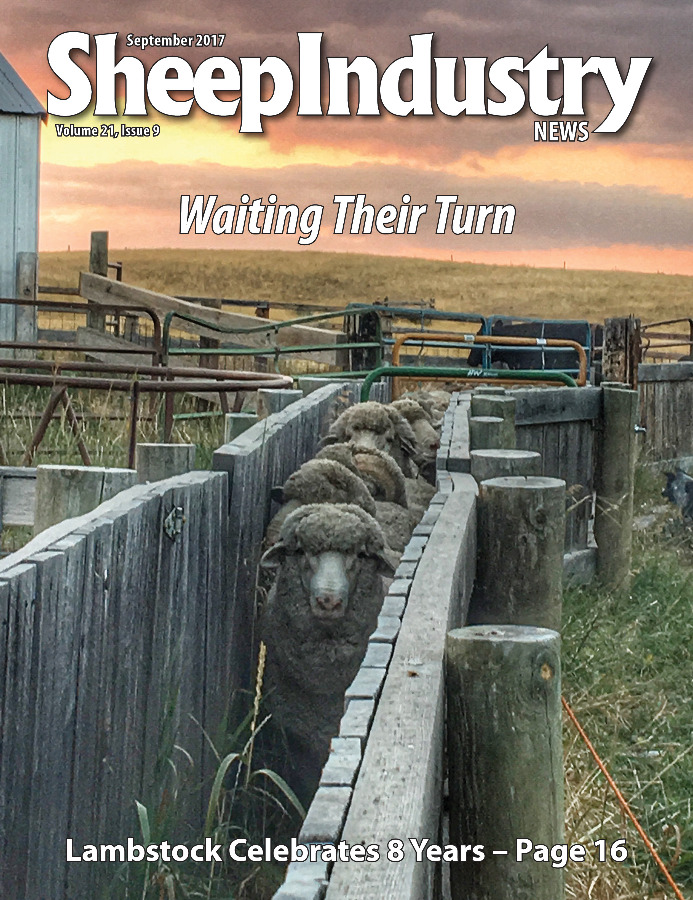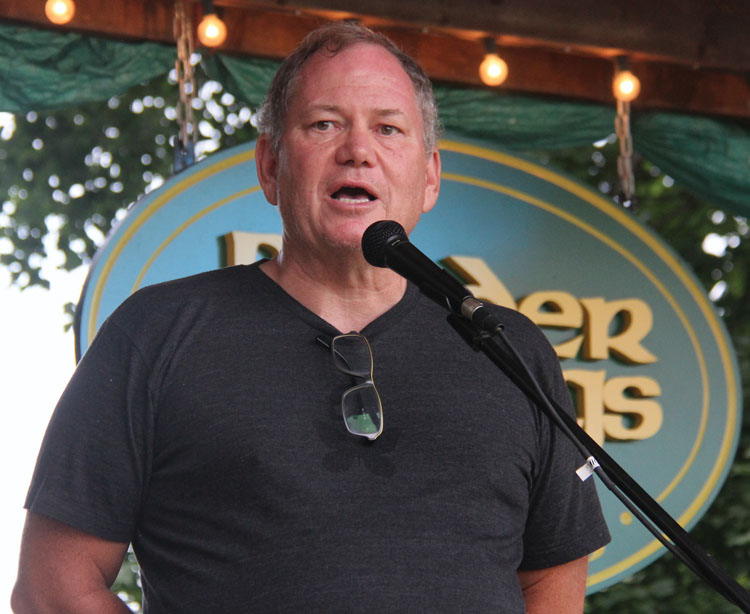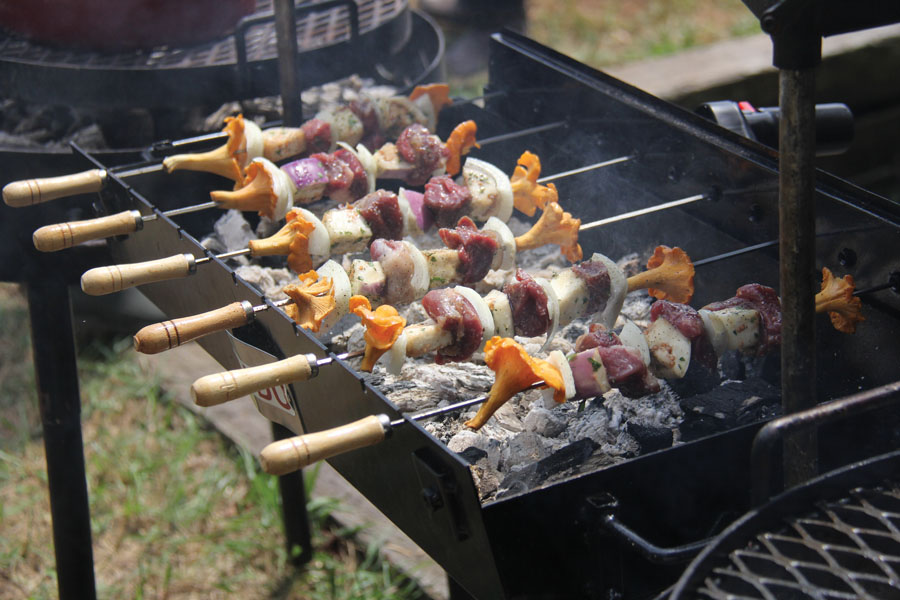
- September 2017
- President’s Notes
- AmericanWool.org Launches
- Priority 1: Parasite Resistance
- Lambstock 2017
- Kopanke Earns Scholarship
- Clements Perseveres in South Dakota
- Court Upholds Wyoming Grazing
- Industry Impact Study Available
- Committee Discusses H-2A
- Executive Board Meets in Park City
- Market Report
- The Last Word
Lambstock 2017
At Lambstock, there’s no such thing as too many chefs in the kitchen. The annual festival devoted to food, friends and fun has become a favorite getaway for chefs from all around the country, despite the fact that it’s more of a working vacation.
 “It’s always organic,” says founder and host Craig Rogers of Border Springs Farm. “We’ve never really organized it. There’s no menu, no official meal times, but it always works. Somehow, there’s food from the moment everyone gets up until about 2 a.m. each day.”
“It’s always organic,” says founder and host Craig Rogers of Border Springs Farm. “We’ve never really organized it. There’s no menu, no official meal times, but it always works. Somehow, there’s food from the moment everyone gets up until about 2 a.m. each day.”
The invitation-only event brings together food service industry professionals from chefs to meat distributors to wineries and craft breweries in the sheep pasture just off Rogers’ back deck. He provides lamb from his Texel flock, while beef, pork and seafood are brought in by like-minded companies and the chefs themselves. A nearly unlimited supply of beer, wine and spirits graces an open bar and approximately 300 guests will spend three days camping, cooking and communing in similar fashion to the event’s namesake in Woodstock.
It’s a heck of a way to spend most of Border Springs’ marketing budget each year, especially when Rogers won’t spend a single moment pushing his product through traditional avenues.
“This is all about relationship marketing,” he says. “I’m not handing out brochures or business cards. There’s no seminar or presentation. I’m just here eating and drinking with friends. I’m not sure I generate a single dollar of business from it.”
“But it has made many of these folks very loyal, and in the meat world, loyalty is hard to come by,” Rogers says. “Part of that is there’s a lot of good meat without a lot of differentiation. They see the farm and understand that this isn’t large, factory farming. I can’t compete with Colorado – and I certainly can’t compete with Australia – on price. But when they see the animals and the farm, it gives them a great sense of where the food comes from.”
As chefs start to arrive on Saturday and Sunday of the three-day event, a white board that hangs in the covered kitchen space fills up. Each will claim a spot (or three or four) among the day’s five meals: lunch, supper, dinner, 4th meal and late night. Of course, someone will throw together breakfast and surprise snacks make regular appearances throughout the day. As food finds it way to the serving table, it’s fair game.
At times, participants aren’t even sure what they’re eating. But there’s little doubt it will be good. Chances are it will be some unique combination of ingredients, flavors and techniques that were previously unknown to the culinary world.
 “I feel like there’s a spirit of camaraderie and community here, so it’s kind of a judgement-free zone. A safe place to experiment,” says Chef Brandon Carter of FARM in Bluffton, S.C. “As long as you have the right intentions, there’s no reason to be intimidated by anyone here.”
“I feel like there’s a spirit of camaraderie and community here, so it’s kind of a judgement-free zone. A safe place to experiment,” says Chef Brandon Carter of FARM in Bluffton, S.C. “As long as you have the right intentions, there’s no reason to be intimidated by anyone here.”
He put together a lamb cheek pie – described by Rogers as a unique take on southern tomato pie – that easily impressed at a Saturday night dinner for a select group of friends and family before the official party started on Sunday. At Sunday lunch, he followed with a lamb sausage that could be called a hot dog but more accurately would be a hot link.
“I guess it was a hybrid, but why worry about labeling things?” he joked. “That’s not what this weekend is about.”
Hot dog, hot link, whatever, a few dozen of them were gone in minutes. Should they ever appear on FARM’s menu, customers will be in for a treat.
A spit-roasted carcass is tradition, going all the way back to the first year when Chef Brian Voltaggio from Volt Restaurant in Maryland asked to bring his staff on a field trip to the farm. A month later, Lambstock 2010 played host to 150 people. A 10-by-10 popup shade provided the kitchen that year.
“We’ve come a long way, but we haven’t really changed much,” Rogers says. “It’s still just a bunch of chefs hanging out in the pasture. It’s the best way I know to build relationships.”

